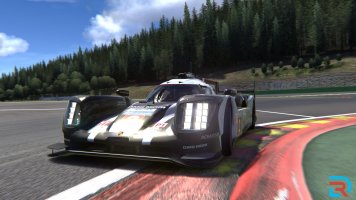A good setup in sim racing can mean a lot in the right hands, but many of us will benefit more from practice.
Most of us have seen YouTube videos with titles like “1:47.338 Ferrari 488 GT3 at Monza with Setup”. The lap time referenced is unusually fast, and many of us infer that we might be able to achieve an equal time using this setup. But this is rarely the case.
Setups aren’t meant to be a panacea. The aforementioned video probably also showcased incredibly aggressive racing lines, plus elite level throttle and brake application that most of us aren’t immediately capable of. And this is paramount; the driver factored more into that lap time than the setup.
Going from a baseline or generic setup to a setup tailored to a specific track does hold the possibility of improving your lap times. But you should consider replacing that possibility with the near certainty of benefits of practice. Especially in a case where you’re new to your car or track, spending a few hours getting a feel for the car’s tendencies and the flow of the track can have a massive effect on your lap times. And in the case where more practice is needed to learn the car and track, introducing new setups may actually hinder your learning if they are designed to produce only short-term results, like a qualifying setup.
So don’t ignore your setup, but don’t expect instant greatness either. For newer or less consistent drivers, practice will have a greater effect on your average lap times than a setup you discover on the internet. Use setups as a complement your performance once you have experience with the car and track, not as a crutch for situations where you haven’t practiced enough.
Most of us have seen YouTube videos with titles like “1:47.338 Ferrari 488 GT3 at Monza with Setup”. The lap time referenced is unusually fast, and many of us infer that we might be able to achieve an equal time using this setup. But this is rarely the case.
Setups aren’t meant to be a panacea. The aforementioned video probably also showcased incredibly aggressive racing lines, plus elite level throttle and brake application that most of us aren’t immediately capable of. And this is paramount; the driver factored more into that lap time than the setup.
Setups worthless?
So does this mean setups are worthless in sim racing? Of course not. A bad setup can cause even highly skilled drivers to struggle on track, and a great setup can help the same highly skilled drivers win races. But don’t expect to jump straight to greatness if you’re not already a competent sim racer. An example of a case where a setup could make a significant impact on your driving experience is if you are consistent within a few tenths lap after lap and just out of striking distance of your competitors. But if your lap times vary significantly and you’re further down the running order, the problem may lie elsewhere.Going from a baseline or generic setup to a setup tailored to a specific track does hold the possibility of improving your lap times. But you should consider replacing that possibility with the near certainty of benefits of practice. Especially in a case where you’re new to your car or track, spending a few hours getting a feel for the car’s tendencies and the flow of the track can have a massive effect on your lap times. And in the case where more practice is needed to learn the car and track, introducing new setups may actually hinder your learning if they are designed to produce only short-term results, like a qualifying setup.
Make your own setup
A good strategy to employ regarding setups is to work toward building your own. This can be an intimidating prospect for many of us, but starting with even small adjustments to tire pressure, fuel load, and aero can have a positive effect immediately. These tweaks plus ample practice will have more positive effects on speed and control for new or inexperienced sim racers than choosing a random setup from the internet.So don’t ignore your setup, but don’t expect instant greatness either. For newer or less consistent drivers, practice will have a greater effect on your average lap times than a setup you discover on the internet. Use setups as a complement your performance once you have experience with the car and track, not as a crutch for situations where you haven’t practiced enough.

